Поэтика мифа - [161]
Levy-Bruhl, who discovered the unique logic of mythology and postulated the prelogical nature of collective ideas, was very subtle in demonstrating the functioning of mythological thinking, never leaving the concrete context and making use of signs. But he was not able to see through the prism of «mystical participation» the intellectual meaning of peculiar thinking in the mythology and its practical cognitive results. He took the diffuseness of mythological thinking for a unique «unlogicab» logic sealed off completely for any personal or social experience, for logical operations as such. The focus upon emotional impulses and magical ideas has opened up the way for purely psychological interpretations of «deintellectualized» myths and the chance was not missed by Jung.
Levy-Bruhl, it seemed, found scientific arguments for a false dilemma proposed by the «philosophy of life» (Nietzsche, Bergson and others): myth or logic, magic or thinking (Frazer was still in favour of considering magic a sample of primitive science). The dilemma makes it hard to accept Jung's-ideas which were a strong impetus for «mythologiizing» in literature and literary criticism. He discovered homogeneity or even common factors in various types of human imagination but his reductive attempt to find a certain collective unconscious is highly provocative but lacks proof. Jung, Ke-renyi, Baudouin, Campbell and others underestimate in particular the fact that primitive mythology was not focussed on critical moments of persona psychology, but was aimed at involving a person in the social medium. Here lies the meaning of rites of passage (rites de passage). The fundamental myths, therefore, are creation myths (collective cosmic myths) and not heroic myths proper. Initiations and other rites of passage are therefore paradoxically transferred into fairy-tales, dealing actually with the personal fate of the hero. This was magnificently demonstrated even before Campbell by Saintive and Propp. The combination of Jung's ideas and ritualistic concepts served as a scientific background for ethnologization of literature and literary criticism. Both rituals and archetypes filled the vacuum formed by «deintel-lectualization» of myth. Serious consideration should be given to those myth theories which 'attempted to overcome the bias enforced by the «philosophy of life» and onesided discoveries ofLevy-Bruhl and Jung.
The symbolic theory of Cassirer typifies the weaknesses of the neokantian Mahrburg school (especially the transcendental concept of communication isolating myth from social communications). This, however, did not prevent him from deepening the concept of intellectual peculiarity of myth, described as an autonomous (which remained unproved) symbolic cultural form characterized by unique methods of objectification of the sensual, shaping the environment, functioning as a system. Cassirer's ideas of structure are still old-fashioned, in the spirit of Qestaltpsychologie. It was only the creator of structural anthropology, Levi-Strauss, who was able to describe the logical mechanisms of mythological thinking (resulting in sign systems), so as to demonstrate its specific logical nature (metaphoric ability, mediations, bn-colage logic on the sensual level, etc.) and at the same time, contrary to Levy-Bruhl, its potential for generalization, classification and analyses without which the neolithic technical revolution would have been impossible. Levi-Strauss combined the cognitive aspect of myth, which was all the. 19th century ethnologists saw in it, and its specific method of thinking. Contrary to many, even to some structuralists (Barthes), Levi-Strauss views myth as a product of archaic thinking, correlated with the total semiotic nature of archaic societies. Levi-Strauss's ideas of – implicit (in ritual) and explicit mythology avoid the extremes of the ritual approach. It is true that the structural approach gives rise to its own difficulties (hence the distinctions between «semiotic» and «structural» aspects finding its expression in the dilemma: is myth equivalent to language or music?).
The «myth-ritual» literary criticism synthesizes ritualism (the Cambridge group, etc.) and Jungian philosophy with an element of the so-called «new criticism». The application of «myth-ritual» methods to the study of the Greek theatre and Shakespeare or such authors as Dante, Milton or Blake was undoubtedly successful, which is hardly true in the case of study of epos and knighty novels. The quest for implicit mythology in the realistic literature in the 18th and 19th centuries is yet inconvincing in view of possible counci-dence of forms stemming from tradition and those inspired by contemporary life. Thus, although the withdrawal from the traditional plot in «Robinson Crusoe» results in a complete dissociation with classical myth, the apotheosis of creation originates an «anti-myth». But the view of the history of civili-, zation as the product of everyman's efforts (and not a collective effort) reminds one of the mythological person alism and the narration itself imitates involuntarily the structure of myths about culture heroes.

"Лет через десять после начала войны и лет через шесть после ее окончания я встретился с профессиональным военным корреспондентом Тихомировым. Мы спали на соседних нарах в исправительно-трудовом лагере "П". Лагерь был лесоповальный, с лесопильным заводом, но к моменту нашей встречи мы уже оба были "придурками", то есть служащими, а не рабочими, и жили в бараке для административно-технического персонала. В лагере, так же как и на фронте, идеализируется долагерное (довоенное) прошлое и во всяком случае усиливается желание утвердить себя за счет своего прошлого перед соседом.
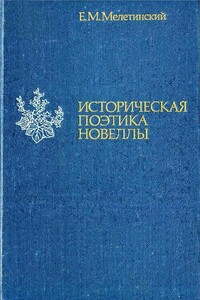
В книге на материале всемирной литературы рассматриваются вопросы происхождения жанровой структуры, формирования классических форм новеллы и ее дальнейших судеб на Западе и на Востоке вплоть до начала XX в. Основные разделы: ранние формы новеллы (новеллистическая сказка и анекдот, восточная новелла, средневековая, европейская новеллы), классическая новелла Ренессанса, романическая новелла XVII—XVIII вв., романтическая новелла XIX в., реалистическая новелла XIX в.

Диссертация американского слависта о комическом в дилогии про НИИЧАВО. Перевод с московского издания 1994 г.
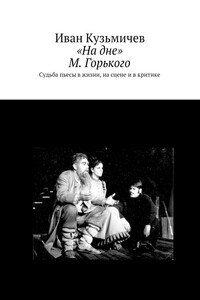
Книга доктора филологических наук профессора И. К. Кузьмичева представляет собой опыт разностороннего изучения знаменитого произведения М. Горького — пьесы «На дне», более ста лет вызывающего споры у нас в стране и за рубежом. Автор стремится проследить судьбу пьесы в жизни, на сцене и в критике на протяжении всей её истории, начиная с 1902 года, а также ответить на вопрос, в чем её актуальность для нашего времени.
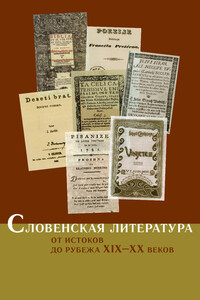
Научное издание, созданное словенскими и российскими авторами, знакомит читателя с историей словенской литературы от зарождения письменности до начала XX в. Это первое в отечественной славистике издание, в котором литература Словении представлена как самостоятельный объект анализа. В книге показан путь развития словенской литературы с учетом ее типологических связей с западноевропейскими и славянскими литературами и культурами, представлены важнейшие этапы литературной эволюции: периоды Реформации, Барокко, Нового времени, раскрыты особенности проявления на словенской почве романтизма, реализма, модерна, натурализма, показана динамика синхронизации словенской литературы с общеевропейским литературным движением.
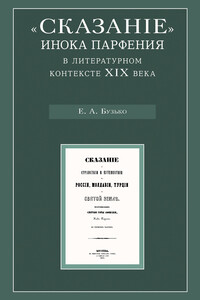
«Сказание» афонского инока Парфения о своих странствиях по Востоку и России оставило глубокий след в русской художественной культуре благодаря не только резко выделявшемуся на общем фоне лексико-семантическому своеобразию повествования, но и облагораживающему воздействию на души читателей, в особенности интеллигенции. Аполлон Григорьев утверждал, что «вся серьезно читающая Русь, от мала до велика, прочла ее, эту гениальную, талантливую и вместе простую книгу, — не мало может быть нравственных переворотов, но, уж, во всяком случае, не мало нравственных потрясений совершила она, эта простая, беспритязательная, вовсе ни на что не бившая исповедь глубокой внутренней жизни».В настоящем исследовании впервые сделана попытка выявить и проанализировать масштаб воздействия, которое оказало «Сказание» на русскую литературу и русскую духовную культуру второй половины XIX в.
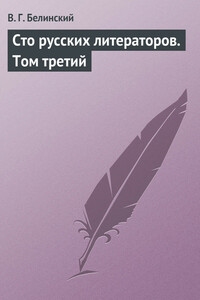
Появлению статьи 1845 г. предшествовала краткая заметка В.Г. Белинского в отделе библиографии кн. 8 «Отечественных записок» о выходе т. III издания. В ней между прочим говорилось: «Какая книга! Толстая, увесистая, с портретами, с картинками, пятнадцать стихотворений, восемь статей в прозе, огромная драма в стихах! О такой книге – или надо говорить все, или не надо ничего говорить». Далее давалась следующая ироническая характеристика тома: «Эта книга так наивно, так добродушно, сама того не зная, выражает собою русскую литературу, впрочем не совсем современную, а особливо русскую книжную торговлю».